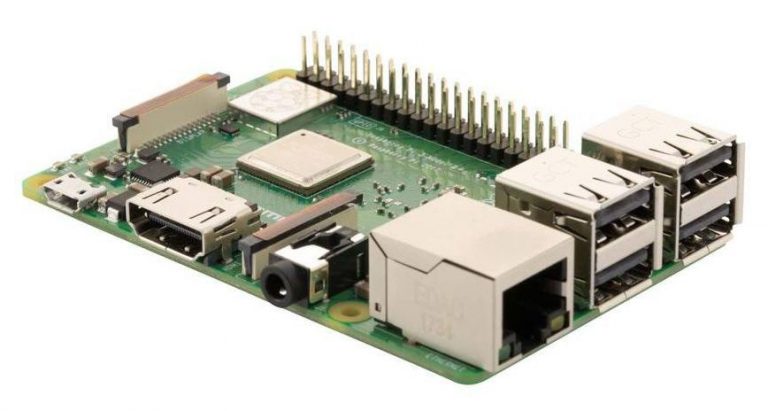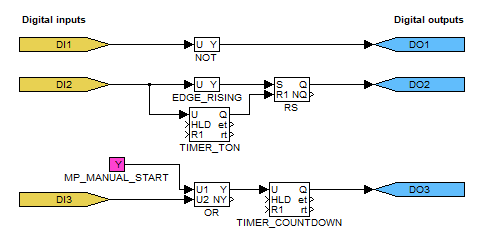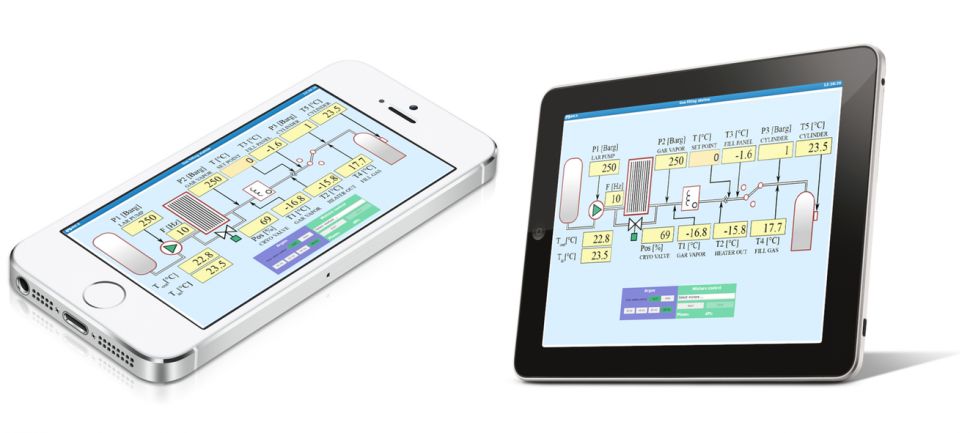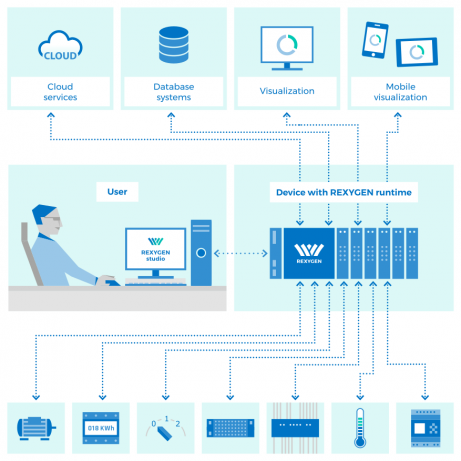Raspberry Pi minicomputer
- The popular Raspberry Pi minicomputer can serve well as the CPU unit for your automation project.
- Ethernet and Wi-Fi connectivity are ideal for using the Raspberry Pi as a communication gateway or IoT node.
- With external circuitry connected to GPIO pins, you can in fact turn it into a PLC/PAC.
- SPI, I2C and UART allow for further expansion (A/D, D/A converters etc.), turning the Raspberry Pi into a superior embedded controller.
- Excellent platform for proof-of-concept prototyping and for low-cost or DIY automation projects.
- Supported Raspberry Pi models: B+/2/3/3B+/4/5

Typical use-cases
- Reading data from Ethernet-enabled PLCs and other devices
- Providing communication gateway between various devices
- Low-cost interface for human operator
- Control of experimental setups and plants
- DIY / Home automationPool automation, Greenhouse control, Solar controller, Home brewing, Heating controller, Sous-vide cooking etc.
No more hand-coding
The REXYGEN runtime turns your Raspberry Pi into a programmable device which will run your algorithms.
The REXYGEN system offers a graphical development environment for programming the algorithms. You can use standard desktop or laptop PC. You create the algorithms from the so-called function blocks (*). The library includes countless items (timers, comparators, filters, PID controllers and many more). Learn more about REXYGEN Studio.

*) The IEC 61131-3 standard defines Function Block Diagram (FBD) as one of the PLC programming techniques.
Input and output signals, external devices
- Direct inputs and outputs (via GPIO pins)
- Modbus TCP or RTU devices (input-output units, energy meters, servo drives, ...)
- Siemens PLCs (LOGO! and S7)
- SQL database import/export (via ODBC)
- Third party devices with generic TCP or UDP communication
- Third party devices with generic UART serial interface
- Third party devices with SPI or I2C bus
- 1-Wire sensors and actuators (temperature sensor DS18B20 etc.)
- Cloud services (REST API, HTTP GET/POST)
Human-machine interface (HMI) for your project? Checked!
- The built-in webserver of the REXYGEN runtime core turns the device into an all-in-one solution.
- With the official Raspberry Pi touchscreen display you have a low-cost local interface for the human operator.
- Our HMI frameworks rely on HTML5 and work in all common browsers on Windows, macOS, Linux, iOS and Android.
- You can use an automatically generated HMI for your desktop, tablet or smartphone. You are also free to design your very own HMI.

Get started with REXYGEN on Raspberry Pi
Buy a runtime licence or evaluate REXYGEN at no cost
Licence for permanent operation
- Buy a permanent licence key for your device.
- With a licence key your algorithms will run without any time restrictions.
- Your algorithms will automatically start on power-up
Free licence for evaluation and testing
- Get a free demo licence key for evaluating REXYGEN with your Raspberry Pi.
- The demo licence key allows you to run almost any algorithm on your device. The run time is limited to 2 hours.
- Anytime you wish to continue testing, you need to restart your device to get another 2 hours.
- Your algorithm will not start automatically upon restart.



